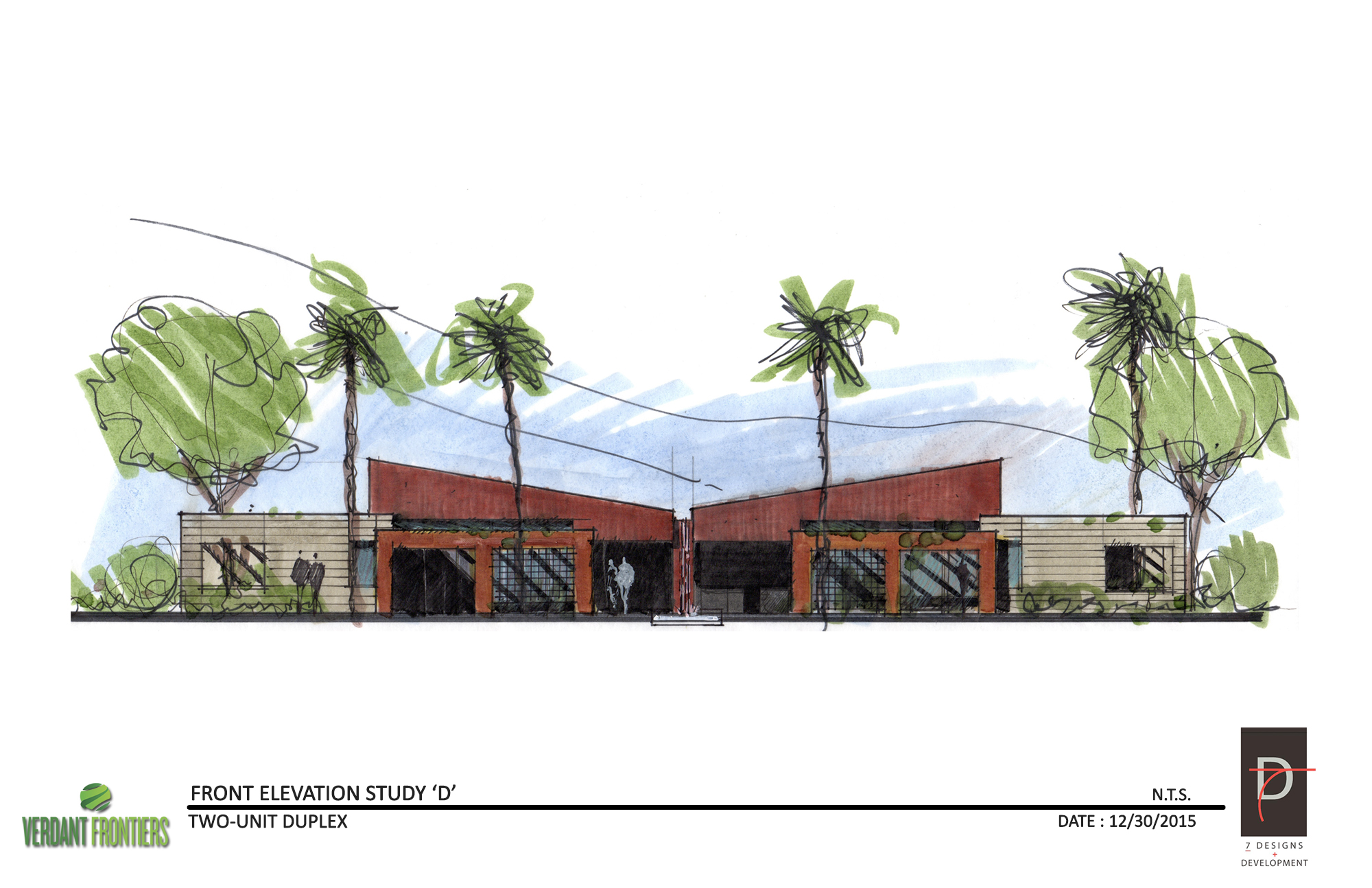Sustainable architecture is not only growing in popularity but also becoming more and more necessary. According to the Center for Climate and Energy Solutions, “in 2015, CO2 emissions from fossil-fuel combustion in the U.S. building sector generated…about 8.6 percent of total U.S. greenhouse gas emissions”, making buildings the fourth-highest emitting sector. At 7 Designs + Development, we focus on sustainability and environmental awareness through the utilization of cleaner materials, eco-conscious construction, and unifying the built space with the natural environment.
There are many different rating systems in place to help guide architects along with green building standards and requirements. The LEED rating system rates everything from construction all the way to interior design. A project can earn one of four rating levels based on a point system. Another is Passivhaus, which is a voluntary standard for heating and cooling a home or building. Other programs or certifications include Energy Star, WaterSense, Forest Stewardship Council, and Green Seal, to name a few. These programs certify for energy efficiency, water efficiency, sustainable sourcing of wood materials, and ensuring the use of sustainable building materials. Together, these certifications help minimize the amount of pollution created by construction and ensure the maximum efficiency of a building in the future.
At the heart of sustainable architecture is great design. Take the towering Bank of America building in New York City, for example. It reuses collected rainwater throughout the building and even features floor-to-ceiling window glazing, which traps heat and promotes natural light. Green design lowers a building’s energy usage and even lowers the structure’s operation costs while decreasing carbon footprints and contributing to a healthier environment. Another great design strategy is Reversible Building Design. This design style allows each component of a building to be removed or replaced without interfering with other parts of the building. For example, walls can easily be removed and replaced with more advanced materials in the future without compromising the flooring or integrity of the entire building.
There are a lot of impactful and beautiful architectural examples of sustainable structures all over the world. One iconic sustainable architecture example is the second tallest building in the world, the Gensler-designed Shanghai Tower, which is towering 2,073 feet in the air. The Shanghai Tower boasts environmentally conscious properties such as a “transparent second skin,” which consists of a double-glass façade that significantly reduces the building’s carbon footprint. This tower is a LEED Gold certified building and the Shanghai Tower’s exterior lighting is 100% powered by wind-driven generators. Another shining example of green architecture is located in Melbourne, Australia. This structure was designed by the Australian-based firm Studio505 and is known as the Pixel Building. The Pixel Building is a bold, colorful statement building that uses an intricate assembly of recycled colored panels to provide its occupants with maximized light control. Forward-thinking design and eco-conscious construction enabled this dazzling building to become Australia’s first-ever carbon-neutral structure. Another notable Australian eco-friendly building located in Sydney is called One Central Park and was designed by the Pritzker Prize-winning architect Jean Nouvel. One Central Park is distinctive because it is covered in 35 different species of plants, effectively trapping carbon dioxide, emitting oxygen, and providing energy-saving shade. According to the LEED Gold buildings in the General Services Administration’s portfolio, these sustainable structures generally consume 25% less energy, 11% less water, emit 34% fewer greenhouse gases, and even boast a 27% higher occupant satisfaction rate.
Along with the number of positive environmental impacts that sustainable architecture and design have, there are also a significant amount of beneficial social impacts. The social benefits of sustainable design include neighborhood restoration and reduced health risks from pollutants associated with building energy use, especially with carbon neutral or carbon negative structures. Sustainable design is no longer a dreamy, hazy concern of the future that seems out of reach or unnecessary. By designing with the natural world in mind, we can reduce carbon emissions and help take climate change head-on. Our architecture firm is committed to sustainable building and utilizing eco-conscious materials and structures in order to design and instill a healthier, safer environment for future generations to thrive.


YOUR COMMENT